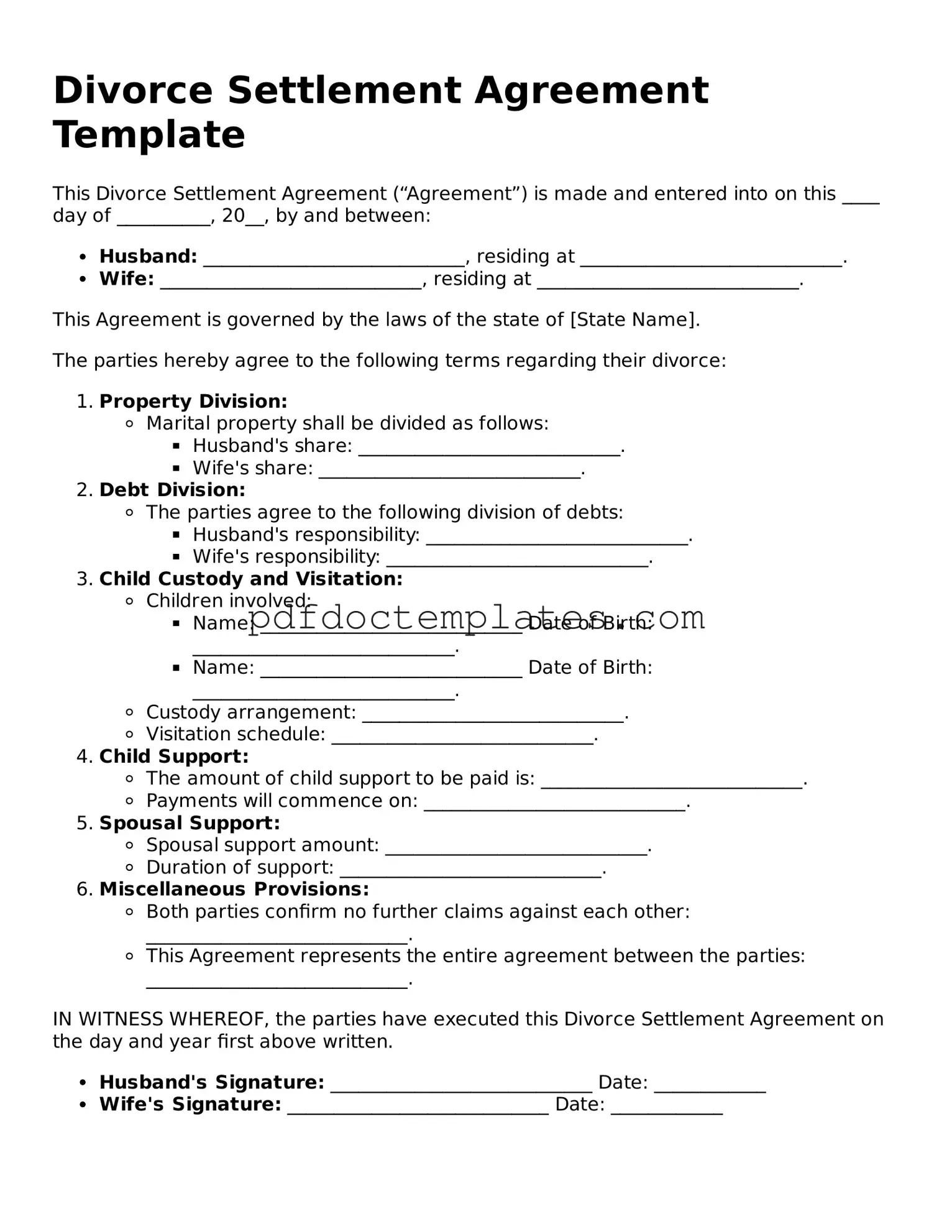Divorce Settlement Agreement Template
This Divorce Settlement Agreement (“Agreement”) is made and entered into on this ____ day of __________, 20__, by and between:
- Husband: ____________________________, residing at ____________________________.
- Wife: ____________________________, residing at ____________________________.
This Agreement is governed by the laws of the state of [State Name].
The parties hereby agree to the following terms regarding their divorce:
- Property Division:
- Marital property shall be divided as follows:
- Husband's share: ____________________________.
- Wife's share: ____________________________.
- Debt Division:
- The parties agree to the following division of debts:
- Husband's responsibility: ____________________________.
- Wife's responsibility: ____________________________.
- Child Custody and Visitation:
- Children involved:
- Name: ____________________________ Date of Birth: ____________________________.
- Name: ____________________________ Date of Birth: ____________________________.
- Custody arrangement: ____________________________.
- Visitation schedule: ____________________________.
- Child Support:
- The amount of child support to be paid is: ____________________________.
- Payments will commence on: ____________________________.
- Spousal Support:
- Spousal support amount: ____________________________.
- Duration of support: ____________________________.
- Miscellaneous Provisions:
- Both parties confirm no further claims against each other: ____________________________.
- This Agreement represents the entire agreement between the parties: ____________________________.
IN WITNESS WHEREOF, the parties have executed this Divorce Settlement Agreement on the day and year first above written.
- Husband's Signature: ____________________________ Date: ____________
- Wife's Signature: ____________________________ Date: ____________
